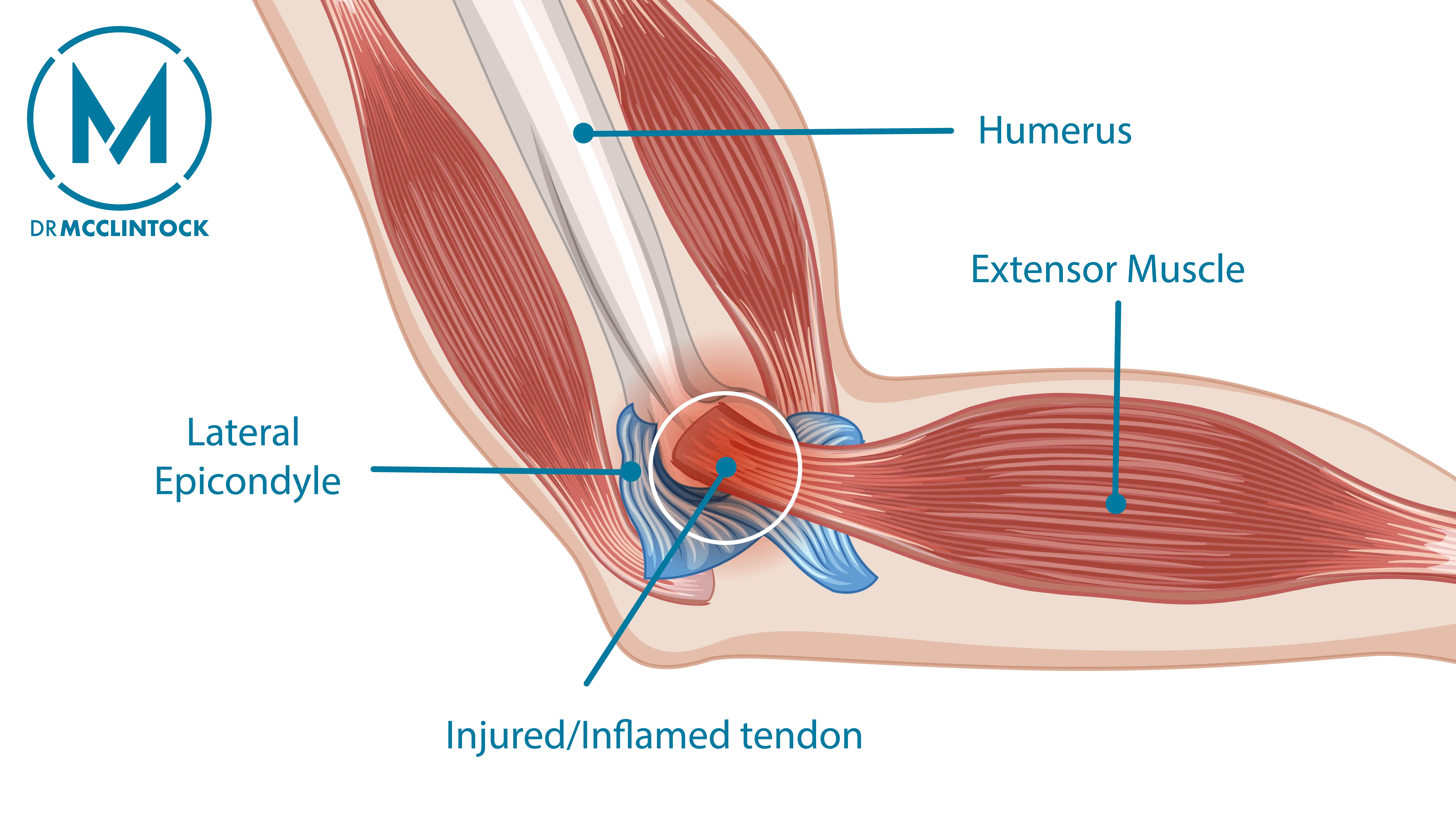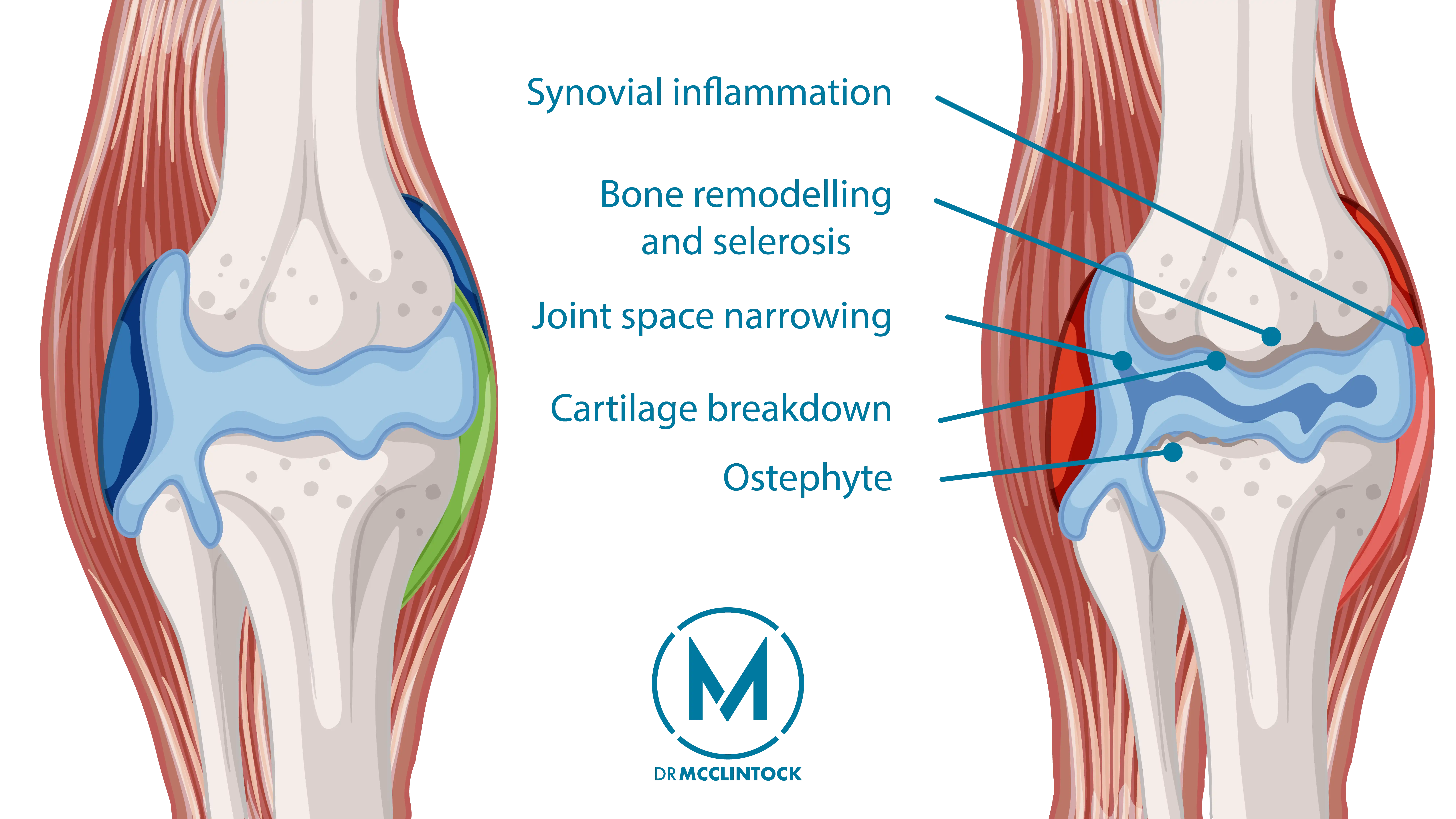Wondering if arthritis can cause tennis elbow? The short answer is no, but arthritis can result in elbow pain that feels similar. In this post, we’ll discuss how to distinguish these conditions and review the best treatment options.
Key Takeaways
- Tennis elbow results from overuse of the forearm’s extensor tendons, causing outer pain and weakened grip strength.
- Arthritis, including rheumatoid and osteoarthritis, can mimic tennis elbow symptoms, but they are not the same. Accurate diagnosis is important for proper treatment.
- Treatment options for both conditions include conservative measures like rest and physical therapy, with surgery reserved for persistent cases.
Understanding Tennis Elbow
Tennis elbow (lateral epicondylitis) is a condition characterized by micro-tears and persistent inflammation of the tendons connected to the elbow. It typically stems from activities that require repetitive wrist and arm movements. Most elbow pain, including tennis elbow, originates from strained or inflamed soft tissues.

Distinguishing tennis elbow from similar conditions like golfer’s elbow or cubital tunnel syndrome is important, as each affects distinct elbow structures. Knowing the specific causes and symptoms of tennis elbow aids in seeking appropriate treatment and preventing further injury.
Causes of Tennis Elbow
The primary cause of tennis elbow is the overuse of the extensor tendons in the forearm. These tendons, responsible for extending the wrist and fingers, can become inflamed due to repetitive motions.
Importantly, risk isn’t just limited to athletes; anyone who engages in repetitive wrist and arm movements can develop this painful condition. Activities like playing racket sports, painting, or even typing on a keyboard may contribute to the development of this condition.
Symptoms of Tennis Elbow
Patients typically experience pain or a burning sensation on the outer part of the elbow, sometimes accompanied by weakened grip strength. These symptoms can vary in intensity, ranging from mild discomfort to severe pain that impacts daily activities. While symptoms may persist for six months to two years, most people start to recover within a year of treatment.
Early diagnosis and treatment can prevent tennis elbow from worsening. Delaying care can prolong recovery, especially in more severe cases.
Can Arthritis Lead to Tennis Elbow?
Knowing the distinction between arthritis and tennis elbow can guide you toward the right treatment for pain. Arthritis is a joint disorder characterized by inflammation or degeneration of the joint. It stems from various causes including inflammatory, degenerative, infectious, or metabolic factors. When arthritis affects the elbow joint, it can lead to long-term persistent elbow pain that may be mistaken for tennis elbow.

Elbow arthritis often involves the deterioration of joint padding. The two most common types, rheumatoid arthritis and osteoarthritis, can significantly impair joint function and mobility.
Rheumatoid Arthritis and Tennis Elbow
Rheumatoid arthritis is a chronic inflammatory disease that sometimes leads to inflammation around the elbow. The pain may radiate from the outer elbow to the forearm, making it challenging to distinguish between tennis elbow and rheumatoid arthritis.
Corticosteroids, NSAIDs, and disease-modifying anti-rheumatic drugs (DMARDs) are common treatments for managing rheumatoid arthritis symptoms.
Osteoarthritis and Tennis Elbow
Osteoarthritis in the elbow results from cartilage breakdown, causing pain and stiffness. This is a “wear-and-tear” condition, where the cartilage progressively breaks down due to many factors including age and activity. The loss of cartilage causes bones to rub together, leading to pain and symptoms similar to those of tennis elbow.
Injuries like dislocation or fracture can also lead to post-traumatic arthritis, which further complicates the diagnosis and treatment process. Recognizing these distinctions is essential for tailoring treatment strategies, as management approaches differ between conditions.
Diagnosis of Tennis Elbow vs. Arthritis
Accurate diagnosis enables effective treatment of elbow pain, whether caused by tennis elbow or arthritis. While the two conditions share similar symptoms, physicians can differentiate them through physical examinations and imaging tests.
Physical Examination
During the physical examination, your doctor will assess the specific areas of pain and tenderness. Tennis elbow pain is typically felt on the outer part of the elbow, while arthritic pain tends to feel achy and constant. Your doctor may also assess for joint instability and specific movements that elicit pain.
Along with the physical exam, a detailed patient history helps to identify pain triggers and activity patterns.
Imaging Tests
X-rays are most commonly used to diagnose elbow arthritis, revealing new bone growth, loose bone pieces, and other signs of arthritis. Ultrasound or magnetic resonance imaging (MRI), which better evaluate soft tissue structures, may be required to rule out or confirm a diagnosis.
Treatment Options for Tennis Elbow and Arthritis
The treatment approach for elbow pain depends on whether the underlying cause is tennis elbow or arthritis, though there is some overlap. Options generally range from conservative measures to steroid injections and surgical interventions.
Arthritis treatment often requires a personalized approach tailored by an experienced orthopedic surgeon. Conservative and non-surgical treatments are typically tried first, serving as the first line of management. However, in some cases, surgery may be necessary.
Conservative Treatments
Initial management for both conditions includes the RICE protocol (Rest, Ice, Compression, Elevation). Activity modification, ergonomic adjustments, and adequate recovery time also help manage these conditions by preventing overuse. Physical therapy plays an important role, particularly for tennis elbow, by providing strengthening exercises for the forearm muscles.
Nonsteroidal anti-inflammatory drugs (NSAIDs) like ibuprofen and naproxen may be recommended for pain and inflammation reduction.
Steroid Injections
Corticosteroid injections are primarily used for inflammatory arthritis to manage severe pain. These injections can provide symptom relief for about six weeks. For persistent tendonitis pain, ultrasound-guided injections may be considered.
Generally, steroid injections are not recommended for tennis elbow, as they can worsen the condition. Patients should weigh the benefits against possible limitations when considering this option.
Platelet-Rich Plasma (PRP) Therapy
Platelet-rich plasma (PRP) injections are an emerging treatment that may help manage chronic cases of tennis elbow and early-stage arthritis. PRP involves drawing a small sample of a patient’s blood, concentrating the platelets, and injecting the resulting plasma into the affected area. The platelets release growth factors that may promote tissue healing and reduce inflammation.
In tennis elbow, PRP has shown promise in improving symptoms for the right patients when traditional treatments fail. Some studies suggest it may be more effective than corticosteroids in the long term, particularly in chronic tendinosis. For arthritis, PRP may provide temporary pain relief and delay the need for surgery in mild to moderate cases.
However, results can vary. PRP is still considered an experimental treatment by many insurance providers and may not be covered. Patients should discuss the risks, costs, and evidence with a trusted orthopedic surgeon before pursuing PRP.
Surgery
When patients are unresponsive to conservative care, surgery may be considered. For tennis elbow, procedures range from minimally invasive arthroscopic surgery to more open techniques involving larger incisions. Both methods aim to repair the tendon and remove damaged tissue.
For arthritis, surgical decisions depend on multiple factors, including the type of arthritis, stage of the disease, patient age, and overall health status. Surgery, including elbow replacement surgery, may be considered after non-operative treatments have failed over a period of 6 to 12 months.
Preventing Tennis Elbow and Arthritis
Maintaining elbow health requires proactive prevention strategies, especially for individuals engaged in high-risk activities. Prioritizing regular breaks during repetitive elbow movements, ergonomic adjustments, and strengthening exercises can help prevent both conditions.
Avoiding Repetitive Movements
Avoiding symptom-causing movements and taking regular breaks is essential for preventing tennis elbow and arthritis. An occupational therapist can suggest movement adaptations to improve comfort and minimize elbow strain.
Simple ergonomic adjustments like adjusting your desk height and using supportive tools may also reduce elbow strain and prevent injury.
Strengthening Exercises
A structured resistance training program focusing on forearm muscles can greatly increase joint stability and flexibility, which in turn, lowers the risk of injury. The recommended regimen will generally include wrist flexion and extension exercises.
Living With Tennis Elbow and Arthritis
Living with tennis elbow or arthritis can be challenging, but strategic pain management and activity modifications often dramatically enhances overall well-being.
Pain Management Techniques
Ongoing joint pain can adversely affect quality of life, so pain management should be a priority when dealing with tennis elbow or arthritis. Pain management approaches include taking medication (NSAIDs), applying heat or ice, and engaging in gentle exercises. Alternating between heat and ice throughout the day can be particularly effective.
Adapting Daily Activities
When dealing with tennis elbow, motions like gripping or twisting may exacerbate the pain. Changing how you perform daily tasks like these and listening to your body can help relieve stress on the joint. Asking about potential modifications when needed and implementing them in your daily life often helps with symptom management and joint maintenance.
Summary
While arthritis cannot cause tennis elbow, it can produce elbow pain that mimics it. Tennis elbow (lateral epicondylitis) is primarily caused by overuse of the forearm’s extensor tendons, leading to outer elbow pain and weakened grip. In contrast, arthritis-related elbow pain stems from joint inflammation or degeneration, as seen in rheumatoid arthritis or osteoarthritis. Tennis elbow pain is typically sharp and localized, while arthritis pain tends to be achy and persistent.
Distinguishing the two involves thorough physical exams and imaging like X-rays or MRIs.
Treatment approaches include conservative methods like rest, physical therapy, and NSAIDs. Steroid injections are useful for arthritis but are not usually recommended for tennis elbow. Surgery becomes an option when other treatments fail.
Prevention and long-term care include avoiding repetitive motions, using ergonomic tools, and strengthening forearm muscles. Pain management and daily activity adaptations can significantly improve life quality for those living with either condition.
Frequently Asked Questions
Can arthritis cause tennis elbow?
No, arthritis cannot cause tennis elbow. However, it can cause elbow pain that resembles tennis elbow symptoms. Accurate diagnosis is essential for effective treatment.
What are the common symptoms of tennis elbow?
The common symptoms of tennis elbow include pain or a burning sensation on the outer elbow and weakened grip strength. This condition can cause mild to severe discomfort.
How is tennis elbow diagnosed?
Tennis elbow is diagnosed through a physical examination and imaging tests like X-rays or MRIs, which help differentiate it from similar conditions such as arthritis. Accurate diagnosis is important for effective treatment and management.
What are the conservative treatment options for tennis elbow?
Conservative treatment options for tennis elbow include rest, ice, compression, elevation, physical therapy, NSAIDs, and ergonomic adjustments. Implementing these measures can effectively manage pain and enhance functionality.
How can I prevent tennis elbow and arthritis?
To prevent tennis elbow and arthritis, avoid repetitive movements, utilize proper techniques, take regular breaks, and perform strengthening exercises for your forearm muscles. Implement these practices to promote joint health and reduce your risk of injury.





